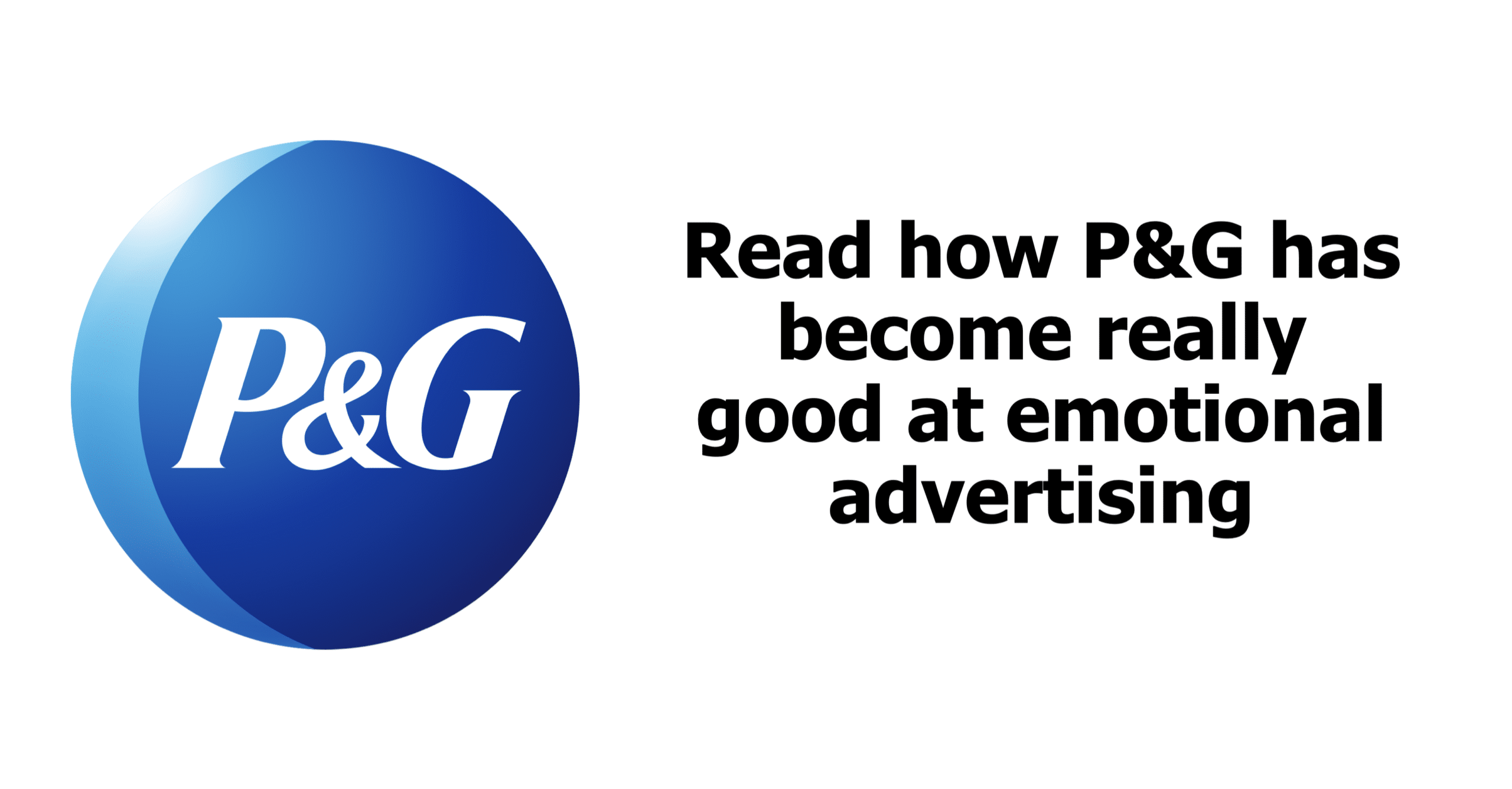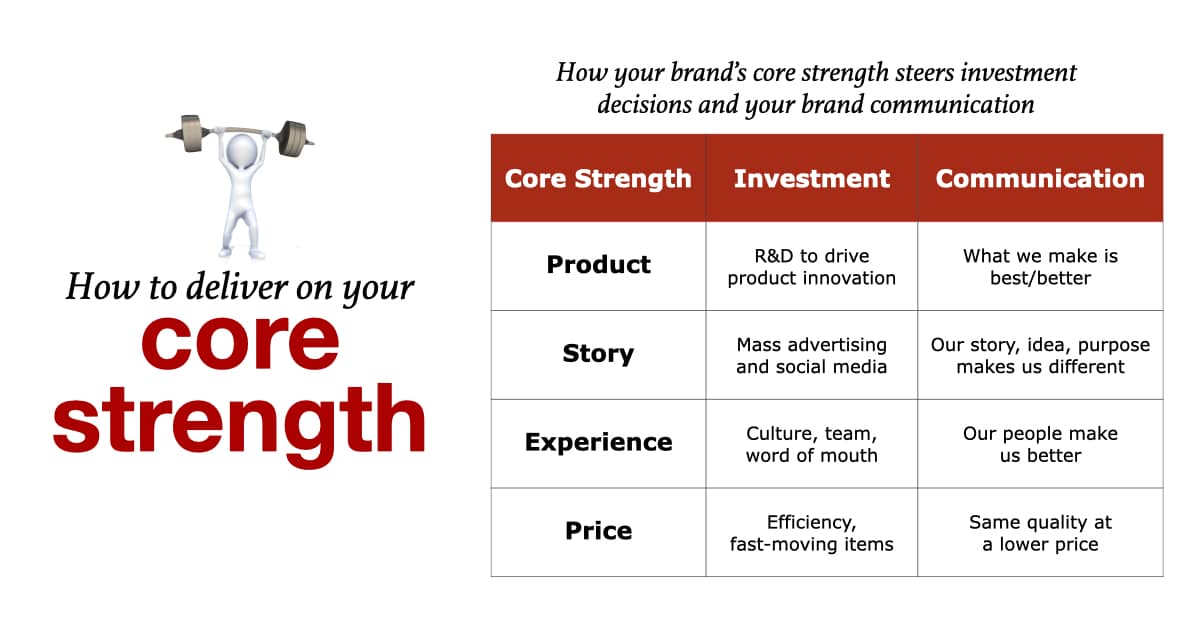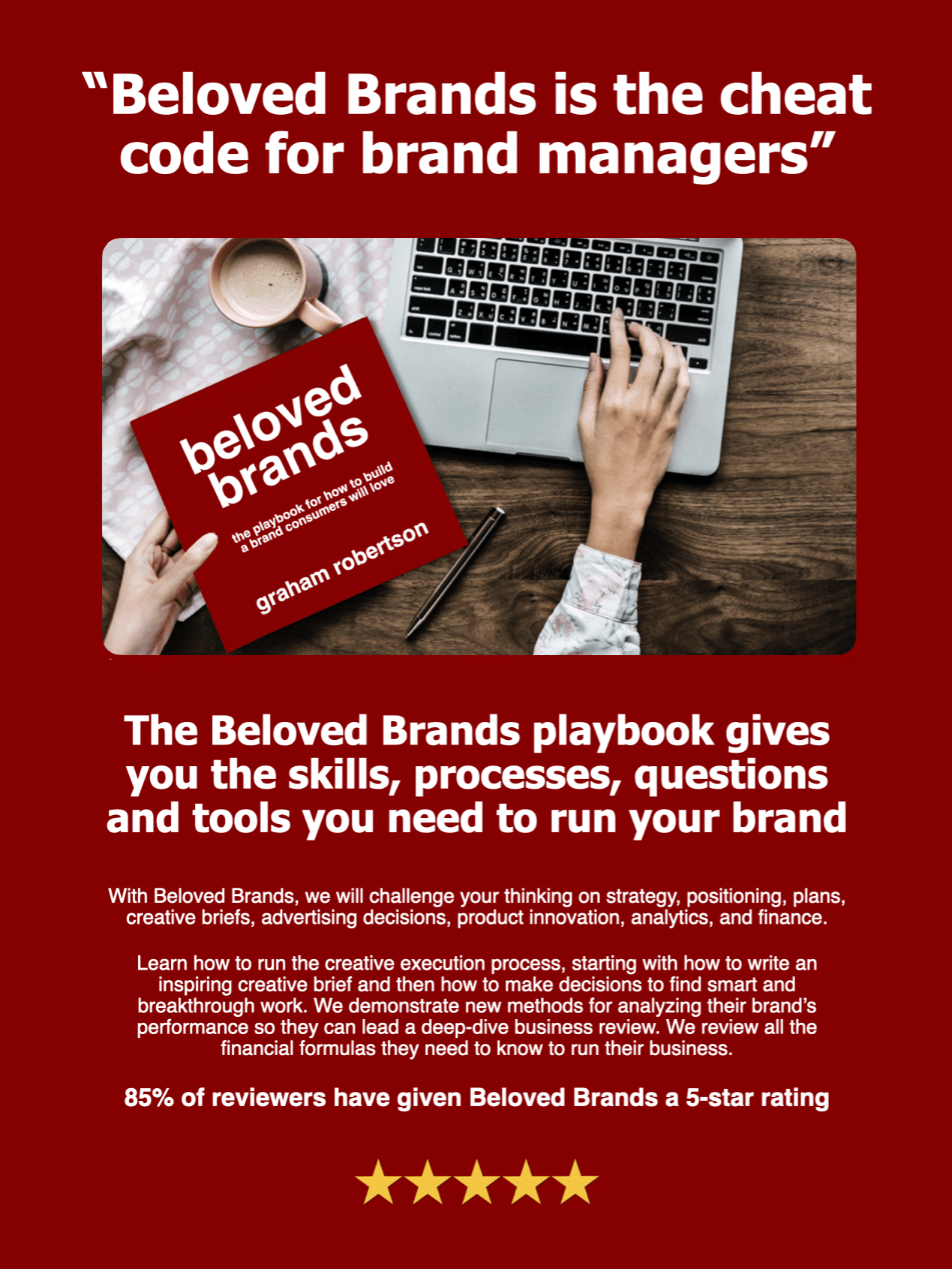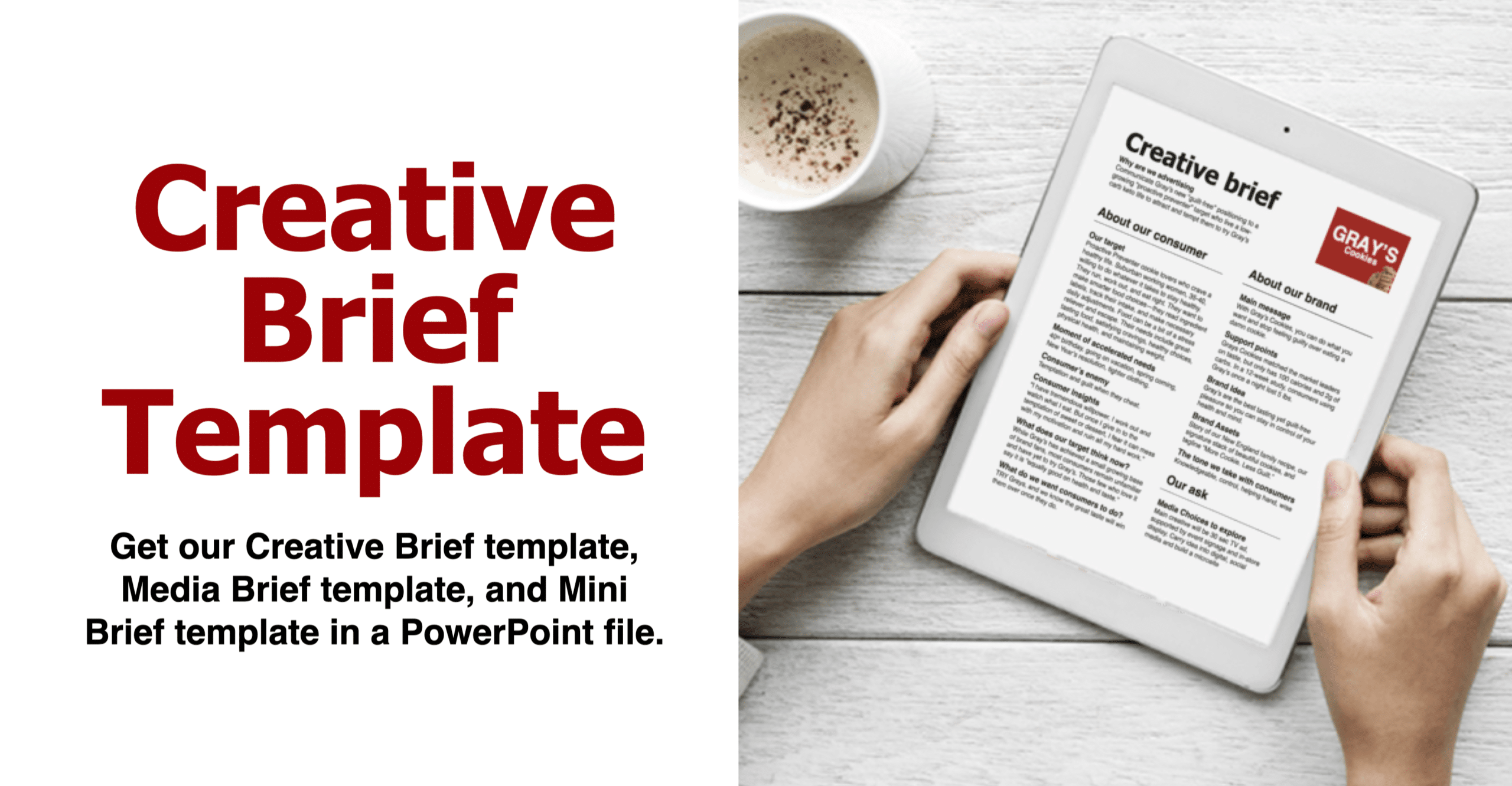In this article, I will discuss the shift in P&G advertising over the past decade and celebrate all of its great emotional advertising work.
In my generation, it was usually pretty easy to spot a P&G marketer. They are the type of marketer who had “the” answer. The “P&G way” used to be: find something (almost anything) that you’re better at than your competitor and then make the most of it by showing a side-by-side demonstration, naming the “next leading brand,” and quite possibly adding some blue liquid to the TV ad. P&G exploited this execution through most of the 1970s and 1980s.
Don’t get me wrong: I have always respected P&G for what it is. They did a good job for decades using that same trusted formula. They just stuck to the same formula a bit too long, and it caught up to them by the late 1990s.

Proctor and Gamble
P&G in the 1980s and 1990s
Here are a few examples of the classic 1980s P&G advertising, including the famous blue liquid type ads. All logic, all demos.
To view, click on the > or volume controls to see the P&G advertising.
By 2000, the P&G advertising formula seemed worn out and they suddenly appeared to hit a brick wall. Growth dried up, several key brands lost their leadership of the market to rivals, and new product launches proved disappointing or even downright failures.
Competitor products had caught up, and in some cases surpassed them. Colgate was beating Crest, Listerine was beating Scope, Finish was beating Cascade, Dove was beating Ivory and others were catching up or passing the trusted P&G brands, the stock price fell dramatically from $120 to $85 almost overnight.
Strategically, brands really have four choices:
- Better
- Different
- Cheaper
- Not around for very long
In the crowded consumer packaged goods (CPG) world, “better” has become increasingly difficult. Every category is so cluttered. Everyone has copied every non-patented product feature. Claims are getting even harder to gain separation from competitors. We are in the world of incrementalization of fast-acting tabs, quick-dissolving strips, or ultra powders. Yawn. More and more, what is winning is “different.”
Core Strength: Four types of brands
- Product-led brands should invest in R&D while communicating the consumer benefits, features, and claims for what makes the brand better.
- Story-led brands need to invest in advertising, with the story, idea, or brand purpose communicating what makes the brand different.
- Experience-led brands have to invest in creating a culture with strong operations. Build your brand communications around the idea that, “Our great people make the difference in creating amazing experiences.”
- Price-led brands must invest in operational efficiency. And, the brand communications explains how “We are smarter and able to deliver the same quality at a lower cost.”
To illustrate, click on the diagram above to see how a brand’s core strength impacts P&G advertising.
Dove advertising
Dove's "real beauty" campaign taught CPG marketers a vital lesson
Unilever was able to demonstrate the emotional side of their brand, giving them a much tighter connection with consumers. As Dove overtook P&G’s Ivory brand, it triggered new thinking for CPG marketers and seems to have awakened P&G marketers to emotional advertising.
To view, click on the > or volume controls to see how Unilever’s Dove impacted P&G advertising.
Examples of the best P&G emotional ads
P&G Moms campaign
The P&G advertising from the 2012 Olympics jumped out. “Thank You Moms” showed everything that moms did for their athletes, and just as Mom is an enabler, so is P&G to the Moms. I’m sure many moms were shedding a few tears over this one. Whether it did anything for the business or not, it sure has opened up the way P&G is willing to communicate.
To view, click on the > or volume controls to see the P&G advertising.
Always "Like a girl"
The Always “Like a Girl” campaign is an inspirational video that connects with true insight into the perception of how girls run changes as they hit puberty.
The ad starts by asking older teens and 20-somethings to run like a girl, and they depict a negative, stereotypical, overly feminine running style. Then, it asks 10-year-old girls to run like a girl, and they run in a highly athletic manner. It asks what changes to make the older girls see running as a negative.
The ad challenges viewers to rethink their stereotypes. It inspires girls with an uplifting message to be themselves and encourages them to believe that, “running like a girl” is a good thing. The Always brand closely lines itself to the insights about the changes happening at puberty, just as moms and daughters will be choosing the feminine hygiene brand they will use.
To view, click on the > or volume controls to see the P&G advertising.
Old Spice
The Old Spice “Smell Like a Man” campaign’s quirky, over-the-top humor is so different it captured immense attention and helped P&G reinvigorate the Old Spice brand. The ad uses a series of quick cuts, putting the actor in crazy circumstances. His dry, over-the-top delivery adds to the humor.
To view, click on the > or volume controls to see the P&G advertising.
Whisper Advertising (India)
I love this ad from P&G India. Whisper’s latest advertisement sheds light on a critical and often overlooked subject: girls beginning their periods as early as eight years old. This ad effectively tackles a serious topic, highlighting one of life’s most common yet least discussed phenomena.
Whisper’s ad is a powerful example of how brands can use their platform to address important social issues, drive change, and foster a supportive community.
It's a Tide Ad
I never thought that during a Super Bowl game, I would ever say, “I’m looking forward to the next Tide ad,” but that’s what I said when Tide created the perfect harmony of creative ideas and media. Tide has always been one of the more trusted brands, but its behavior is almost stoic and cold.
Fifty years of side-by-side demonstrations against every possible type of stain. With “It’s a Tide ad”, using the boring Tide brand added to the humor.
With all eyes judging every Super Bowl ad, Tide decided to mock the typical ads and surprise you that it was Tide doing so. Full marks for attention, brand link, and stickiness. As Tide has 99% awareness of being the stain-fighter, they didn’t need to communicate much. Nice job, P&G!
To view, click on the > or volume controls to see the P&G advertising.
Ariel (India)
A great ad for the Ariel brand from India speaks to the insight of the changing times for modern women, articulated by a father observing his daughter in action as she juggles her work life and home life. He speaks to his own guilt and uses that to alter his own behavior. It is a very emotionally engaging way to layer in consumer insight. Have a look.
To view, click on the > or volume controls to see the P&G advertising.
Beloved Brands Marketing Training
To view, use the arrows to see our Beloved Brands Marketing Training program brochure.
It's time to elevate your marketing team's performance with our Beloved Brands Marketing Training program.
Our marketing training makes your marketers smarter with brand analytics, strategic thinking, brand positioning, brand plans, and marketing execution.
Lessons to learn from P&G advertising
Focus on Different When You Can’t Win Better
P&G recognized that simply claiming superiority in product performance was often not enough, especially in markets saturated with equivalent options. They shifted toward highlighting how their products fit uniquely into the consumer’s lifestyle or addressed specific consumer needs that competitors were not emphasizing.
For example, P&G’s detergent brand Tide focuses on its unique ability to remove stains in one wash, but when facing tough competition, P&G advertising has shifted to emphasize its role in life’s pivotal moments, like ensuring a child’s baseball uniform is pristine for the big game. This example of P&G advertising creates a differentiating factor, making the brand stand out not by being better in a generic sense but by being uniquely suited to the customer’s life.
Instead of Product Features, Move to Consumer Insights
Moving away from a features-first approach, P&G advertising began to delve deeper into consumer insights to drive their advertising. This means understanding the consumer’s deep-seated needs, desires, and pain points and addressing those through advertising narratives.
For instance, P&G’s “Thank You, Mom” campaign doesn’t speak to the features of any single product; instead, it taps into the universal insight of a mother’s love and support. This example of P&G advertising uses consumer insights to resonate emotionally because it reflects a profound understanding of the consumer’s values and experiences.
Storytelling and Moments Connect More with Your Consumers Than Claims and Demos
P&G advertising has shifted towards storytelling, recognizing that narratives create a stronger emotional bond with consumers than traditional claims and demonstrations. Stories allow consumers to see the brand within the context of their own lives, creating a more personal connection.
For example, the Always #LikeAGirl campaign tells a story of empowerment rather than just demonstrating product use. By doing so, P&G advertising becomes more memorable and impactful, as it aligns the brand with moments and experiences that matter to its consumers, transcending the product itself to forge a more profound brand-consumer relationship.













